
Derwent Valley Mills is a World Heritage Site along the River Derwent in Derbyshire, England, designated in December 2001. It is administered by the Derwent Valley Mills Partnership. The modern factory, or 'mill', system was born here in the 18th century to accommodate the new technology for spinning cotton developed by Richard Arkwright. With advancements in technology, it became possible to produce cotton continuously. The system was adopted throughout the valley, and later spread so that by 1788 there were over 200 Arkwright-type mills in Britain. Arkwright's inventions and system of organising labour was exported to Europe and the United States.
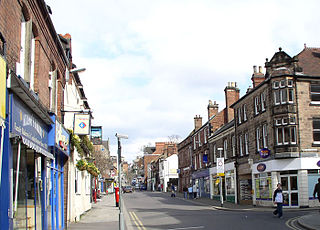
Belper is a town and civil parish in the local government district of Amber Valley in Derbyshire, England, located about 7 miles (11 km) north of Derby on the River Derwent. As well as Belper itself, the parish also includes the village of Milford and the hamlets of Bargate, Blackbrook and Makeney. As of the 2011 Census, the parish had a population of 21,823. Originally a centre for the nail-making industry since the Middle Ages, Belper expanded during the early Industrial Revolution to become one of the first mill towns with the establishment of several textile mills; as such, it forms part of the Derwent Valley Mills World Heritage Site.

Edward Strutt, 1st Baron Belper PC FRS, was a British Whig Party politician. He served as Chancellor of the Duchy of Lancaster from 1852 to 1854 under Lord Aberdeen.

Jedediah Strutt or Jedidiah Strutt – as he spelled it – was a hosier and cotton spinner from Belper, England.
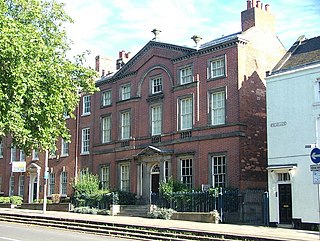
Pickford's House Museum of Georgian Life and Costume is in Derby, England. It is named after architect Joseph Pickford, who built it as his family home in 1770. It was opened as a museum in 1988. The building is Grade I listed.

The Margaret Mitchell House is a historic house museum located in Atlanta, Georgia. The structure was the home of author Margaret Mitchell in the early 20th century. It is located in Midtown, at 979 Crescent Avenue. Constructed by Cornelius J. Sheehan as a single-family residence in a then-fashionable section of residential Peachtree Street, the building's original address was 806 Peachtree Street. The house was known as the Crescent Apartments when Mitchell and her husband lived in Apt. 1 on the ground floor from 1925 to 1932. While living there, Mitchell wrote the bulk of her Pulitzer Prize-winning 1936 novel, Gone with the Wind.
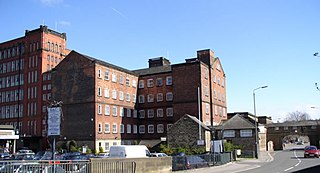
Belper North Mill, also known as Strutt's North Mill in Belper, is one of the Derwent Valley Mills, given UNESCO World Heritage Status in 2001.
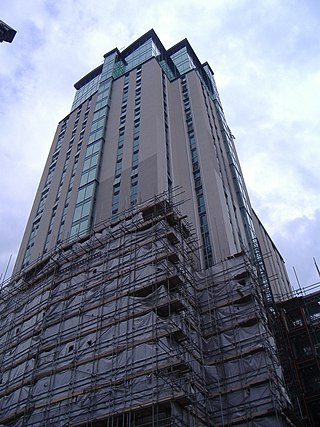
The Orion Building is a 90-metre (295 ft) tall high rise residential building on Navigation Street, Birmingham 5, England. Construction of the tower began in 2004 with demolition of the previous building on the site, and was completed in 2007. As part of the development, the original façades of some of the previous buildings have been retained and incorporated into the lowrise sections of the complex. The complex consists of a 28-storey tower with five basement floors. It includes the city's first penthouse which was sold for £1.65 million. The fourth and final phase of the building, being marketed as 'Sirius', is nearing completion.

Darley Abbey is a former historic mill village, now a suburb of the city of Derby, England. It is located approximately 1.4 miles (2.3 km) north of the city centre, on the west bank of the River Derwent, and forms part of the Darley ward along with Little Chester and the West End. The settlement dates back to the medieval era, when it was the site of an Augustinian monastery. In the 18th century, the Evans family developed their planned industrial mill village in the area; Darley Abbey is now part of the Derwent Valley Mills World Heritage Site.

William Strutt, FRS (1756–1830) was a cotton spinner in Belper, Derbyshire, England, and later a civil engineer and architect, using iron frames in buildings to make them fire-resistant.

Derby School was a school in Derby in the English Midlands from 1160 to 1989. It had an almost continuous history of education of over eight centuries. For most of that time it was a grammar school for boys. The school became co-educational and comprehensive in 1972 and was closed in 1989. In 1994 a new independent school called Derby Grammar School for boys was founded.

Newton is a village in the Bolsover district of Derbyshire, England, about a mile south of Tibshelf. Population details are included in the civil parish of Blackwell.

Henry Strutt, 2nd Baron Belper,, styled The Honourable Henry Strutt between 1856 and 1880, was a British businessman, courtier and politician. Initially a Liberal, he left the party over Irish Home Rule and later held office as Captain of the Honourable Corps of Gentlemen-at-Arms from 1895 to 1905 in the Unionist administrations headed by Lord Salisbury and Arthur Balfour.
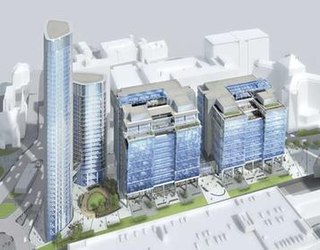
Snowhill is a mixed-use development in the Colmore business district, known historically as Snow Hill, in Central Birmingham, England. The area, between Snow Hill Queensway and Birmingham Snow Hill station, is being redeveloped by the Ballymore Group. The £500 million phased scheme has been partly completed on the site of a former surface car park adjacent to the railway station and West Midlands Metro terminus.

Wyver is a locality within Belper civil parish, which is in the Amber Valley district of Derbyshire, England. The area takes up the western bank of the River Derwent just north of the former mills of Belper. Although overwhelmingly rural, the area has some notable associations within that industry and has been used for various activities throughout that time, and in recognition of these it has been made part of the wider UNESCO designated Derwent Valley Mills World Heritage Site.
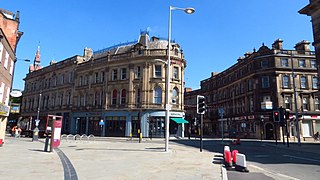
Derby is a city and unitary authority area on the River Derwent in Derbyshire, England. The county is named after Derby, which was its original county town. As a unitary authority, Derby is administratively independent from Derbyshire County Council. The population of Derby is 261,136 (2021).
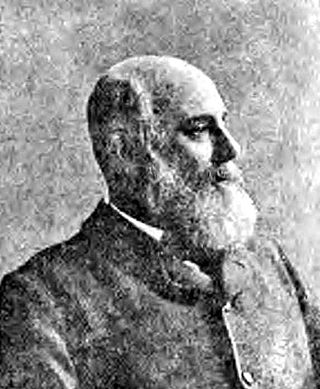
Sir (Thomas) William Evans, 1st Baronet was an English Liberal politician who represented the constituency of South Derbyshire.
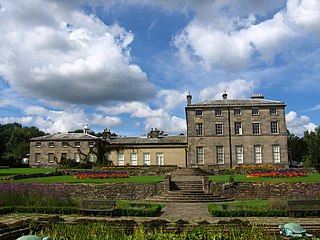
William Evans was a Whig politician who sat in the House of Commons in three periods between 1818 and 1852.

The Victoria Working Men's Club was a working men's club at 275 Sandycombe Road in Kew, Richmond, London which operated from 1892 until 2015, when the building it occupied was sold to a property developer. In February 2017 Richmond upon Thames Council approved a planning application to demolish the building, and erect a new community building and six flats.

Oakhurst House is a derelict building in Shining Cliff Woods above the village of Ambergate in Derbyshire. The house was built in 1848 by Francis Hurt behind his iron forge in Ambergate. It was owned by the Johnson family of industrialists for many years who were benefactors in the local area, building the parish church of St. Anne at Ambergate.























